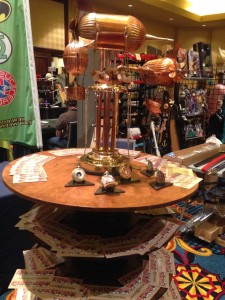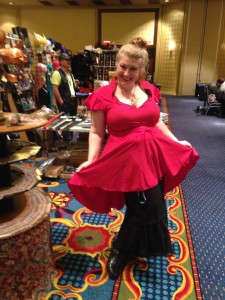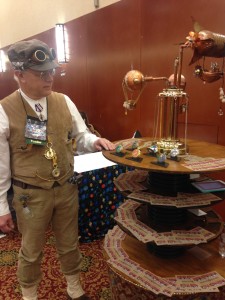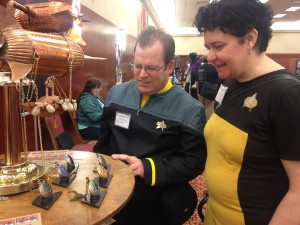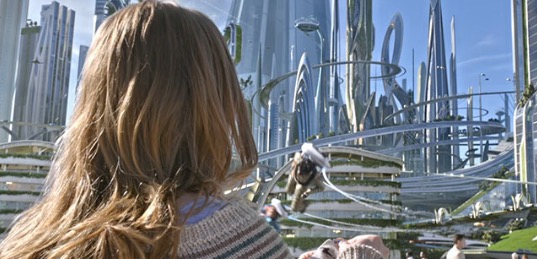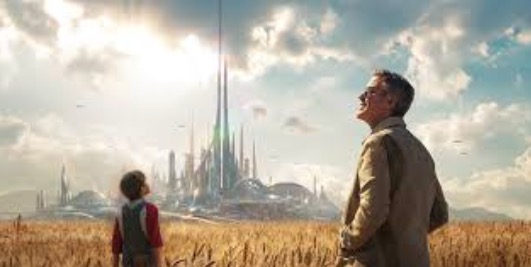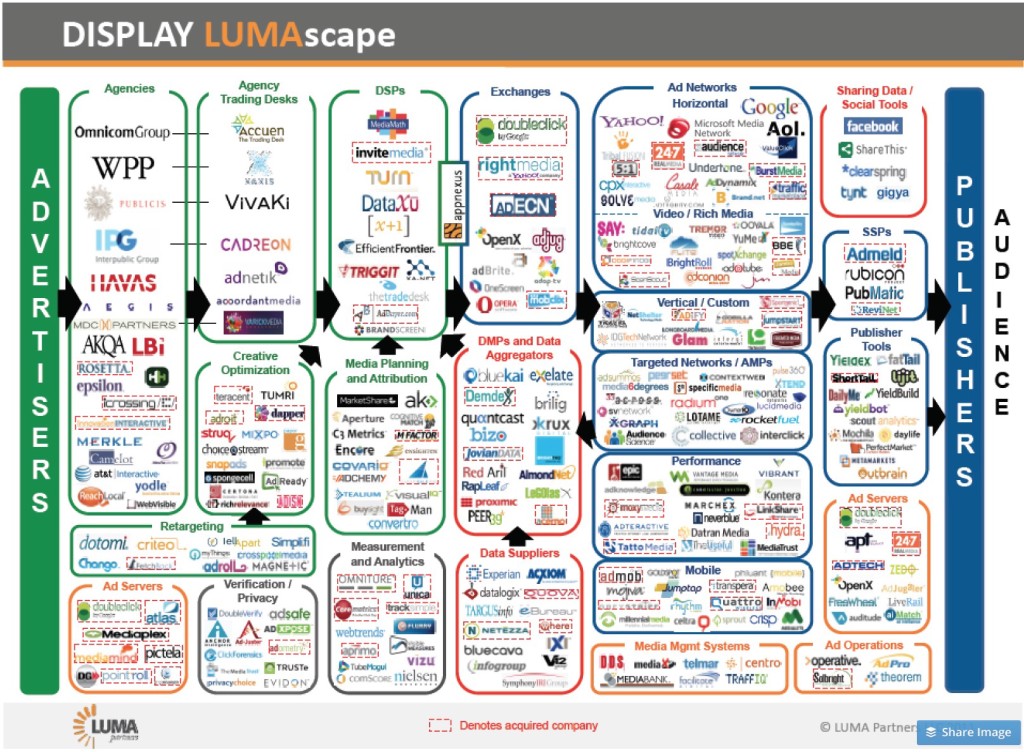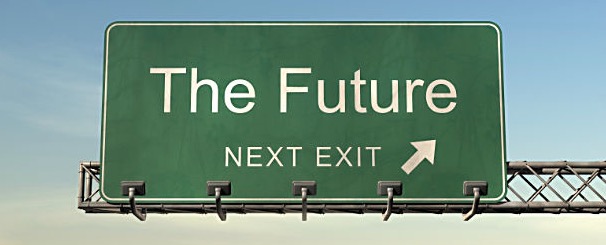
4 Major Trends In IT
Five years ago I chose WordPress to publish the Appvance.com Web site. At the time many people viewed WordPress as blog publishing software. I saw WordPress as a great way to create Web sites because it is very easy to publish new content and create a dialogue with customers. WordPress scales from my blog to the NYTimes.com. Today I also host on WordPress STARLINGwatch.com and VOTSH.com.
The WordPress team recently launched the Calypso project. Matt Mullenweb, lead developer of WordPress, wrote a blog article on Calypso and appears in a Gilmore Gang video interview. Calypso rewrites WordPress using Javascript (prior it was in PHP) and uses a very modern architecture: an all API design using node.js and a Javascript library for building user interfaces using React that is a spin-off from Facebook.
For all my fellow software architects, I recommend you learn about these technology trends:
- DevOps. Agile brought developers into continuous integration (CI), DevOps brings developers into configuration management (CM). Companies that update their apps rapidly have a significant competitive advantage. Facebook updates itself 2 or more times a day. WordPress.org does 140 deploys per day.
- JavaScript ToolKits and Native Development. Developers like code libraries so they can reuse code from project to project. React is a Javascript library for app development from Facebook. While these may work for organizations for a while, Matt Mullenweb in the Gillmore interview cautions that the React/Javascript/Web object approach on iOS just doesn’t work well yet. It’s not tenable to write your app in Javascript and not write it natively. Matt says there are too many deep Javascript crashes in the underlying WebKit code libraries that developers can’t control. That forces you to build a native implementation.
- User messaging, deep linking, and notifications – take a look at Google App Streaming. Apps are becoming a portal to code from other apps. Kind of how Photoshop is more of an operating environment for all the plug-ins than a paint program.
- Scale-Up Architecture. I coined the term Scale-Up Architecture to show how architects are focusing on responsive Web apps, continuous integration and deployment, and scalable data access using Cloud-based commodity servers.
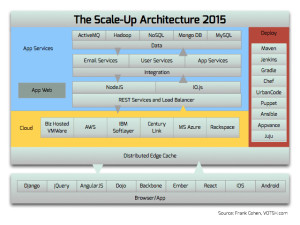
The idea of a single integrated IT stack is no longer part of CIO or CTO plans. Instead they focus on interfaces for replaceable lightweight components. For example, in the data tier Hadoop, Mongo and others battle for developer adoption. Reliance on generally adopted industry standard interface best practices makes it possible to switch components of the stack. And some of vendors partner – for example, the MongoDB connector for Hadoop.
2015 was an incredible year, I hope 2016 for my IT collegues is awesome!
-Frank
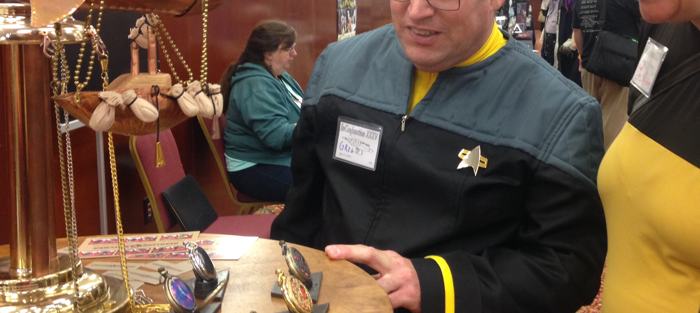
Seeking New Steampunk Events and Communities
People new to Steampunk and Cosplay often assume that it’s a regular “festival” event as they’ve come to know them — a mostly passive experience where everything is planned, orchestrated and pre-packaged by the event producers, and attendees to just come and enjoy the show. In fact, the exact opposite is true.
The people who attend are no mere “attendees,” but rather active participants in every sense of the word: they create the place, the interaction, the art, the performance and ultimately the “experience.” Participation is at the very core, and there are many ways to participate.
With that spirit in mind, we have begun attending events to share the STARLING pocket watches and short story, to volunteer and help make these gatherings great events, to get inspired by what people create and display, and to entertain and enlighten the community that gathers.
For example, at the Mobicon conference in Mobile, Alabama, we were excited to show the relaxing glowing effect of these pocket watches, share the free short tale hat explains the backstory of these pocket watches, and generally blow people’s minds.
And, over the Fourth of July weekend at InConJunction in Indianapolis, the community showed off its style and passion by using techniques from meditation, yoga, and relaxation with the STARLING watches to solve problems, find love, and improve their world.
Most people we met told us, “We’ve never seen anything like the STARLING pocket watches with calming glow effect before.” We even pre-sold some watches, something others at the event said has never happened before.
We also had people offer to buy the exhibit stand itself. And why not?! Mary Keane of the new Bellingham Foundry maker space in Bellingham, Washington, designed and fabricated the exhibit. It features an art piece straight out of the Steampunk style. Mary is available to design your project, too.
So while we work toward a late Summer 2015 release of the STARLING pocket watches, we are happy to participate in these communities.
Now we’re seeking new communities, events, and festivals. We would like to hear your ideas. Please contact us today at http://votsh.com/contact/
And, please register to start receiving the free STARLING short story. It is six chapters of fun, romance and time-traveling adventure. Register at http://www.starlingwatch.com/signup/
-Frank Cohen
CEO at VOTSH and Inventor of STARLINGwatch.com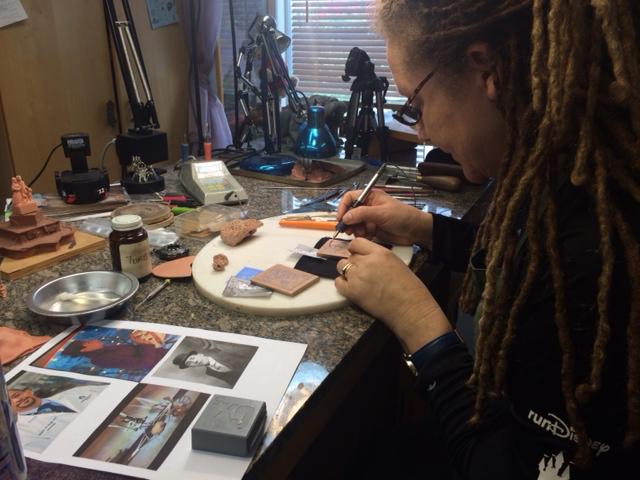
Disney Imagineer Terri Hardin Announces New Project
Disney Imagineer and actress Terri Hardin Jackson announced a new project to celebrate Disneyland’s 60th anniversary. Terri will be sculpting a large plaque in cast resin of the Disneyland Castle. The plaque is a limited edition and collectable.
I ordered mine today, it looks like a great project. And, I’ve had the privilege of working with Terri on the upcoming STARLINGwatch.com project, these collectable pocket watches feature Terri’s bas relief sculpting art work. My hope is she goes full Terri on the sculpting – the detail on her Disneyland Map collectible is incredible.
Details on the Disneyland Map project and a video from Terri are at http://buff.ly/1RkLhJK
-Frank

Tomorrowland Is Fun
Tomorrowland is a fun movie. I enjoyed it, it brought up emotions like the Pixar movies do, there is a whole lot going on, and I’d like to see it again, which is the sign of a great movie.
There were many times in the movie that got me thinking about the story points and character motivations, and not all of them favorable to the movie.
The story is mostly about how inventors, designers, and entrepreneurship changed since the 1960’s. The 1964 Worlds Fair opened when I was 3 years old. It represented the best of our optimism in capitalism as a result of the 1950’s post World War II economic boom. Walt Disney said optimistically at the time, “If you can dream it, you can do it.”
I went to the Fair a few times in the late 1960s when the city was trying to figure out what to do with it. They had bigger things to worry about. I grew up in Harlem, New York in the 60’s and 70’s, and the city was falling apart around us, and bigotry and racism were out in the open, and big difficult community changes were underway. Our apartment was at the top of a 21 story tall brick building and we were happy to retreat there if the outside environment got too hostile. I had to learn to manage my fear as a child, because if you weren’t always thinking about everyone around you, you could and did get hurt physically and emotionally. This was my world when I was 6 and I was in kindergarten.
[Spoilers ahead]
Tomorrowland well portrayed the feeling of going back to Flushing Meadow park after the Fair to realize this is where it once was. Kind of like remembering a grandparent who is long passed. In the 1970’s it was a reminder to millions of New Yorkers of how low the city had fallen.
Tomorrowland’s main characters are a boy inventor – at 12 he invents a working jet pack – and a young girl animatronic android – she is on a mission to invite up-and-coming inventors to the move to Tomorrowland city. Eventually the boy inventor falls in love with the android, who cannot love him in return. He later invents a machine that shows people a dismal dystopian future. His unrequited love and the depressing machine help him to become a skeptic. And there is no room for skeptics in Tomorrowland, so he is evicted from the city.
Any man who was in love with a woman incapable of loving him back – for whatever reason – is going to be touched by the story line. And that’s what stands out to me about Pixar movies. Yet, this isn’t Pixar, it’s Disney, and the director Brad Bird hasn’t transitioned that well. This Disney movie has a bunch of different story lines with characters and emotions going on. I wasn’t sure how to relate to all of them, so the movie seems to speed-up and then slow-down in the story telling for me as I relate to one character and not to others. There’s no overriding theme that all the characters help with – like Nemo’s Father overcoming his overprotective ways, or Incredibles’s celebration of what makes each of us special, or the Matrix movie which tells us there is no spoon.
George Cloney’s acting in this movie seems to get in touch with a teen age boy – but it’s like his character learned nothing else and he winds up being the angry old man yelling “Get off of my lawn.” The counter to his anger is a teenage girl who is tech savvy and uses drones and tablet computers to try to keep NASA’s Cape Canaveral from disassembling a rocket launchpad. The teenager’s motivation is to keep her father – an unemployed launchpad engineer – happy and employed.
The teenage girl’s motivation seems muddled. The film shows the launchpad engineer father happy in his home garage making things – like he just returned from a Maker Faire event – and he is accepting of change. Her motivation seems to be denial. I could see her petitioning the Disney company to keep the Carousel of Progress going even though its day is well past and its message no longer applies to anyone living.
I related her character to the Anonymous group’s attempt to counter extreme national and capitalist attempts to control us. She has access to technology but has no direction in life to use it. There is no greater purpose in her life and she’s growing up hopeful and frustrated. This reminds me of every young adult I met in Saudi Arabia a few years ago – surrounded by money and gadgets and no way to access them and no future.
The love story between the inventor, now an aging older man (George Clooney), and the ever pre-pubescent android girl led me to some discomfort. She dies in the inventors arms as a 12 year old girl and he is a 50 year old man still in love with her. It felt kind of creepy. Androids that die in this movie explode. And he needs to destroy a malfunctioning huge machine. So he drops her dead body from his arms and her explosion destroys the machine. Kind of weird imagery and themes throughout.
It would have been better for androids to be able to love and she tells the inventor she just isn’t in love with him. Then later the teenage girl would teach him how to move on and find another person to love.
Tomorrowland uses Steampunk, but isn’t Steampunk. It proposes the universal heros of Steampunk – Tesla, Edison, Eiffel, and Verne – are the inventors of the Tomorrowland city. Steampunk stories are about people who face adversity and have grace while solving problems, using wit, intelligence, and technology, and for women it shows how to break through glass ceilings. Tomorrowland has 2 female parts: the teenage girl uses her wit and tech to sabotage dismantling a NASA launch pad, and a tween girl who ignores her boss’s cease-and-desist orders for the greater good to find more inventors to help build Tomorrowland.
Tomorrowland uses the Maker Movement, but isn’t the Maker Movement. I am a Maker and part of the Maker Movement. Making is more than do-it-yourself, it’s about pursuing the American dream of utility, thrift, invention and entrepreneurship while minimizing capital needs and waste. And mostly it is about sharing your invention in a way that empowers others to improve their lives to make their own inventions. The California Bay Area Maker Faire is where 3D printing, Arduino, Internet of Things (IoT), hardware open source, and Burning Man “hippy” style artistic tech/fabric/interactive expression got started. I’m proud to be part of it. Tomorrowland shouldn’t be like Elysium, a space station for the 1% floating over our heads, it’s something that everyone should be able to plug into, contribute, and benefit from where they live and make things.
Disney’s mission for Epcot was to be a blueprint for how any place can be turned into a community of tomorrow – not a place you were invited to go to. The girl android gives pins to people as an invitation to go to the Tomorrowland city. I wished the pins were instead a yes/no request for Tomorrowland’s skills, resources, and people to come to the person invited. That’s the spirit behind ABC’s old Extreme Makeover, Home Edition TV show.
Disney’s vision was a community for all of us. The field of people at the end of Tomorrowland does not include any of today’s working class. The pro-unionist in me wants to see someone who clean’s the bathrooms at McDonald’s in that field too. Don’t they contribute to our civilization as much as everyone else?
That’s why the Matrix movies made such an impact on me. The Wachowskis got the story of how the Internet and Web was created so in line with what I saw in my real life career: it took a bunch of engineers working themselves into a crazy stupor (and some of them committing suicide from the intensity) and always doing so alone, only meeting their fellow engineers virtually in emails and forum postings, yet depending on their fellow engineers for everyday cooperation, understanding, and support. All that loneliness leads to dark thoughts and paranoia and fear of control. Tomorrowland and the Matrix deal with the same themes.
I was hoping Tomorrowland would be a beacon for everyone to take in the ideals of the Maker Movement, Steampunk, and the Progressives and lay-out a way for us to all benefit and get there. Maybe that’s just my thing.
After watching Tomorrowland I want to visit City of Arts and Sciences in Valencia, Spain, where some of the movie scenes were filmed.
There is so much going on in this movie that I want to go back and see it again, and again. And that’s a good sign of a great movie.
-Frank
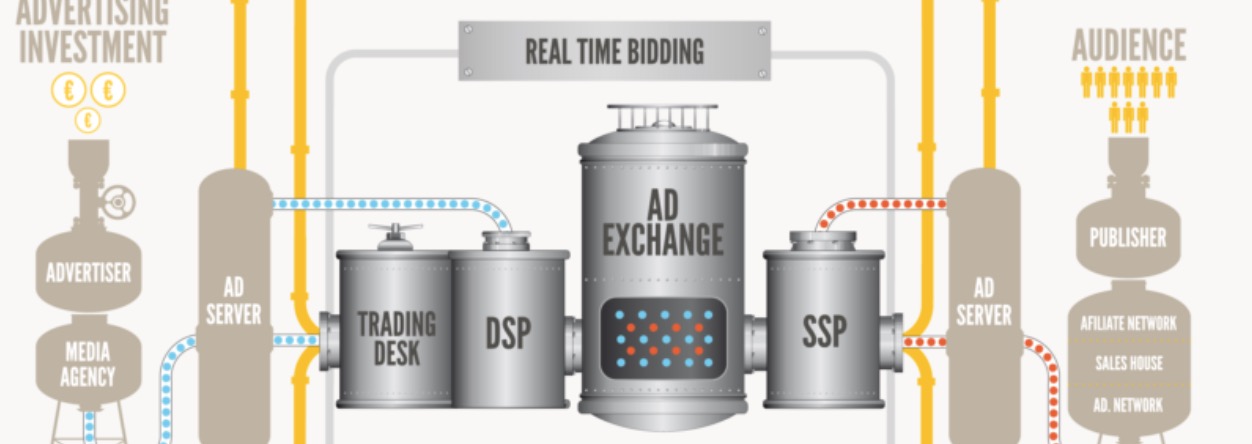
Programmatic Advertising Hits The Rocks
The Incite Programmatic Summit 2015 conference at the New Yorker Hotel brought together media publishing companies, digital agencies, and brands this week. Programmatic advertising is technology and best practices to run effective highly targeted advertisements to consumers. The ad industry is trying to find an automated way to achieve placing the most effective ads on Web pages and mobile apps.
Publishers, agencies and brands all want to sit around the same table and have a discussion: The brand wants to know the cost to get in front of qualified customers, the media publisher – who has a sales team selling advertisements – wants to know how many ads will run, and the cost, and the agency needs to know to what extent their creativity in their ads will be effective to the target audience.
To understand the cooperation that is needed to make a programmatic ad buying success consider brands like Kellogg’s for PopTarts wanting a cool trendy appearance, to a younger audience. They approach a media company through an agency to surface Shaun White videos that they can attach to the PopTarts brand through creative advertisements. If the PopTarts/Shaun White ad gets 20,000 to 50,000 viral shares, the brand loves it.
The problem for everyone involved is the huge technology and branding solution needed. Here is the programmatic universe:
This is a picture of the advertising industry hitting the rocks. It is too complex for all parties involved.
The upcoming V software from VOTSH will provide brands and agencies with APIs for programmatic advertising within Web page and mobile apps (iPhone, Android.)
The challenges to programmatic advertising in 2015:
- Scarce inventory of places to run the ads
- Not scalable because the discussion among brands, publishers, and agencies has to happen for each ad campaign
- Long lead times
The scalability isn’t a technology issue, there are many solutions in AdTech. The key issue is the manual natures of developing the knowledge of the inventory available and matching it to the brands goals.
The panelists at the Incite conference spend an enormous amount of their day-to-day time identifying and evaluating tech solutions. They see the mergers and acquisition activity around programmatic being an indication the space is healthy.
Data Management Platforms (DMP) are software that gathers up, sorts and houses information, and spits it out in a way that is useful for marketers, publishers and other businesses. DMPs are working really hard to figure out how data about consumers is related. For example, for the person walking near a Best Buy store how can the brand run an ad they will see?
Sarah Gorvitz from Stoli says they need to market to Millennial males, but in the on-line gaming space there are regulations over advertising to people. She needs a way to manage her inventory of ads to comply with the regulation. Right now the solution is to use a media buying company that takes on the responsibility.
Google and Facebook appear to the programmatic industry as tremendous holder’s of consumer’s secondary data – likes, tastes, opinions, buying history – but don’t let brands or agencies know that data.
ID mapping technology will replace the browser cookie to give brands better views of consumer behavior, especially in the mobile space.
Programmatic has moved past low-cost advertising because the technology delivers unique value. For example, some consumers buy breakfast cereal all year, others buy oatmeal when the weather turns cold. Programmatic evolved to deliver highly customized advertising to consumer.
Programmatic really hits the wall when it comes to consumer packaged brand (CPB) giants like PepsiCo, Unilever, and Nestle. The CPB’s very rarely have dedicated resources to manage consumer data. That is a need the V engagement server intends to address.
-Frank


